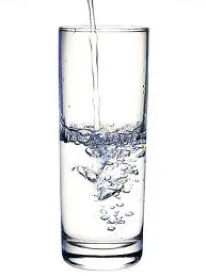On April 4, 2016, the U.S. Environmental Protection Agency (EPA) published its updated Recommended Aquatic Life Ambient Water Quality Criteria for Cadmium -- 2016 under Section 304(a) of the Clean Water Act (CWA). 81 Fed. Reg. 19176. The updated cadmium criteria recommendations replace the criteria values that EPA last issued in 2001. The CWA directs EPA to develop, publish, and periodically revise the ambient water quality criteria for aquatic life and human health that best reflect current data and scientific knowledge. EPA does not consider economic impacts or technical feasibility in its development of the criteria. EPA's recommended criteria are not legally binding, and states and authorized tribes have the discretion to adopt other scientifically defensible criteria that are sufficiently protective of designated uses (e.g., aquatic life, recreation, and public water supply).
Cadmium occurs naturally in mineral deposits, and also is detected widely in the environment at low levels. Ninety percent of the cadmium found in surface waters is attributed to anthropogenic sources, including mining and manufacturing (e.g., batteries, pigments, plastic stabilizers, metal coatings, and nanoparticles for solar cells and color displays). The updates reflected in EPA's 2016 criteria are based on new toxicity studies and the inclusion of additional species. The key changes in this revision from EPA's 2001 aquatic life criteria for cadmium are the following:
- Inclusion of new data for 75 aquatic species and 49 genera not previously represented;
- Incorporation of a total hardness-toxicity relationship for freshwater criterion (acute toxicity of cadmium has been shown to decrease with increasing water hardness);
- Change from 24-hour duration to 1-hour averaging period for acute criterion (the 1-hour duration is consistent with almost all other acute criteria);
- The freshwater acute (1-hour duration) value decreased (i.e., more stringent) from 2.0 µg/l to 1.8 µg/l at a total hardness of 100 mg/L as calcium carbonate (CaCO3);
- The freshwater chronic (4-day duration) value increased (i.e., less stringent) from 0.25 µg/l to 0.72 µg/l at a total hardness of 100 mg/L as CaCO3;
- The estuarine/marine acute (1-hour) value decreased from 40 µg/l to 33 µg/l; and
- The estuarine/marine chronic (4-day) value decreased from 8.8 µg/l to 7.9 µg/l.
Although the acute criterion duration will now be expressed as one hour, in EPA's response to comments document, EPA states that "water quality based effluent limitations (WQBELs) will continue to be expressed in terms of Maximum Daily and Average Monthly averaging periods." This is consistent with National Pollutant Discharge Elimination System (NPDES) permit regulations. The change in duration should, thus, not require additional water quality sampling.
States and tribes are not legally bound to adopt EPA's water quality criteria into their respective state/tribal water quality criteria. If a state/tribe does not adopt the revised criteria it must include an explanation in its triennial review submission to EPA under CWA section 303(c)(1), however. Criteria are used to derive effluent limitations including NPDES permits. Permittees can expect to see many states incorporate the latest cadmium criteria revision into state criteria between now and the next water quality standards' triennial review cycle. Water quality criteria are not effective until they have been adopted into state water quality standards and approved by EPA.
Commentary
The revised cadmium criteria should not have an impact on commercial products containing cadmium. In late 2015, wastewater treatment plants and electric utilities that may have had cadmium present in their effluent submitted comments on the draft version of the criteria that expressed concerns with efficacy of particular tests, data quality, and concern that the change in duration for chronic values may increase sampling burdens. Although EPA does not need to consider technical feasibility in this case, there were no comments indicating that the criteria values were not technologically feasible for industry and wastewater treatment. It is important to note that states/tribes could still elect to adopt more or less stringent criteria based on site-specific concerns in order to meet designated uses. Most states provide notice and opportunity for public comment when revising or updating water quality standards.


 />i
/>i

